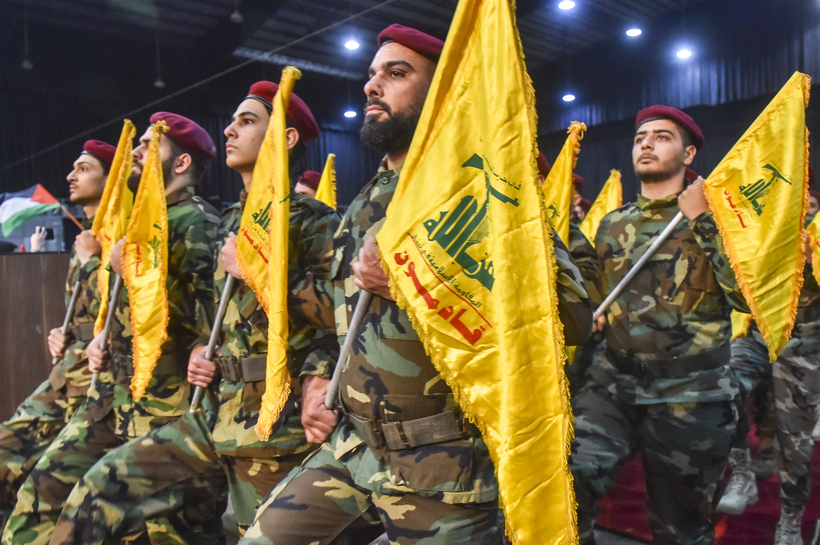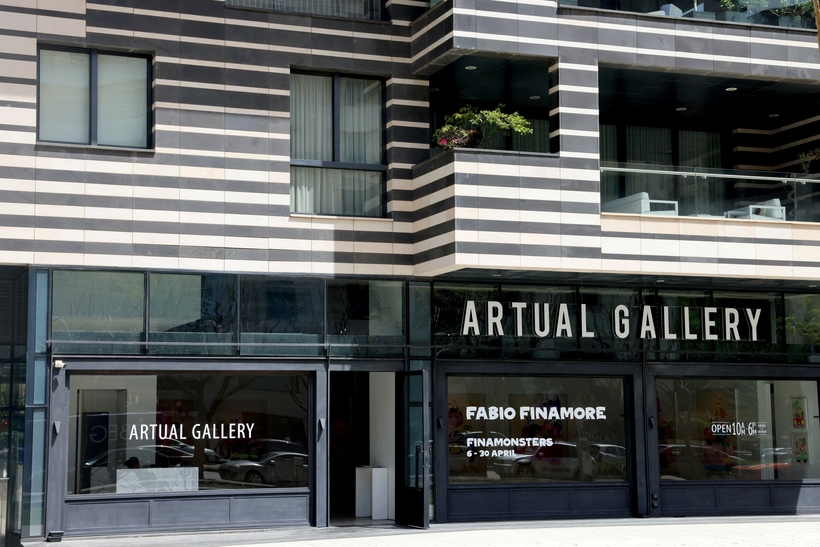
Meet the alleged money-laundering, sanctions-evading Lebanese collector with a penchant for expensive art, blood diamonds, and, possibly, Hezbollah
Little is known about Nazem Said Ahmad, the Lebanese businessman and high-profile collector, but one thing that’s certain is that he has liberal tastes in art, bought a lot of it, and wasn’t quiet about it. Before it was shut down, his Instagram account, where he posted regularly about his acquisitions, had 172,000 followers. His bio read: “Art has no rules.”
Today, Ahmad stands accused of using his vast art-and-diamond collection to launder money for Hezbollah, the Islamic militant group that was officially classified as a terrorist organization by the U.S. government in 2019, as well as for evading sanctions placed on him by the U.K. and the U.S.
Despite a statement from the Department of Justice that Ahmad is not a terrorist, in the sense that he never bombed anything or killed anyone himself, in December of 2019 he was determined to be a “specially designated global terrorist” by the U.S. Department of the Treasury’s Office of Foreign Assets Control (OFAC) for “providing material support” to Hezbollah. Then, last month, a nine-count indictment from the U.S. District Court for the Eastern District was unsealed, revealing recent diamond- and art-market transactions that continued well after the label was issued.

The Department of Homeland Security has since targeted 52 individuals (including several members of Ahmad’s family) and entities spanning Belgium, England, the Ivory Coast, the Democratic Republic of the Congo, and Angola with connections to Ahmad, who also had investments in the U.A.E. and Hong Kong. A $10 million reward currently stands for more information, as Ahmad’s whereabouts remain unknown. (He went off the grid after the indictment documents were unsealed, and could not be reached for comment for this story.)
“Art has no rules.”
Assessments of Ahmad’s investments vary into higher and higher extremes: $54 million in art since 2012; $160 million in art-and-diamond transactions combined between December 2019 and December 2022; $440 million in goods overall since 2019.
The official government filings would suggest that all of Ahmad’s investments were made for the sake of laundering money and, indirectly, for the Hezbollah cause. But no one buys that much art unless they have a soft spot for it. So, is Ahmad a cunning criminal or a passionate collector?
The answer might be both.
Boom and Bust
According to the French-language Lebanese newspaper L’Orient du Jour, the Ahmad family is originally from a small village in southern Lebanon; Ahmad’s parents left for Sierra Leone and its sudden diamond boom in the face of abject poverty. Nazem (or “Nazim”—spellings differ) Said Ali Ahmad was born in Africa in 1956, one of eight children, to patriarch Said Ali Ahmad and his wife, Hind Abbas Ahmad.
Nazem Ahmad later married Rima Kamil Ya’qub Baqir and had six children of his own. Through his siblings, he is related to the Nassour clan (Lebanese diamond-and-arms dealers instrumental, according to the investigative outlet Bellingcat, in facilitating diamond operations for the al-Qaeda militant groups in Liberia and Sierra Leone, and linked also to Hezbollah activity in the region); the Tajideen family (the eldest brother, Kassim, was arrested in 2017 on charges of financing the Lebanese Hezbollah movement); and Adham Hussein Tabaja (a prominent Hezbollah financier and real-estate developer in Lebanon).

Ties between Ahmad’s businesses and violent world conflict were first brought to public attention during the “blood diamond” years of the 2000s. Sierra Leone was at that time an epicenter of brutal war and exploitation in which diamonds served as currency for weapons trafficking.
The United Nations began investigating conflict diamonds in 2002, and Ahmad was, according to the Bellingcat report, arrested a year later in Antwerp, where Triple A Diamonds, a branch of his sprawling company Sierra Gem Diamonds alleged to have been connected to Hezbollah from 1992 to 2002, was based. (“Apparently,” the Bellingcat report reads, “large numbers of diamonds were bought in Africa and sold with non existing profit margins in Antwerp. The money was apparently transferred via Switzerland to Lebanon, Iran, and Switzerland.”)
There is no record of Ahmad’s arrest, and the U.S. Department of Justice did not respond to AIR MAIL’s request for comment, but Ahmad’s activity since—buying large quantities of art and diamonds, and not from behind bars—would suggest that he was acquitted or released.
Ahmad’s alleged connection to Hezbollah is arguably hazy. The government filings are vague—referring only to his vast network at the service of “financ[ing] Hizballah”—and there is no public information linking Ahmad with the group.
Despite continued assertions from U.S. government agencies that art is the ideal conduit for money-laundering, as the cash flow in private sales is difficult to trace, this would not be the first time the monetary link between art and terrorism was, perhaps, inflated.
In December 2015, the Pulitzer Prize–winning journalist Ben Taub published a story called “The Real Value of the ISIS Antiquities Trade” in The New Yorker. While reports from CBS News at the time had alleged “hundreds of millions” in antiquities trading was generating funds for terrorism, Taub’s research suggested that the collection of the Islamic State hardly factored beyond $100,000, and that the artifacts in it were largely “junk.” The story concluded that the ISIS antiquities trade was not as large as suggested by U.S. authorities, and may not have been a significant source of income for the terrorists.
Assessments of Nazem Said Ahmad’s investments vary into higher and higher extremes: $54 million in art; $160 million in art and diamonds combined; $440 million in goods overall.
Beyond many million dollars’ worth of Lebanese banking transactions the U.S. government authorities deemed suspect, the unsealed indictment documents state, “Defendant NAZEM AHMAD’s support for Hizballah was also reflected in materials he possessed, including a Hizballah-associated funeral video, a video celebrating a Hizballah martyr, video of [Hezbollah M.P. Mohammad] Ra’d speaking at a Hizballah funeral, video of [Hezbollah secretary general] Hasan Nasrallah giving a speech, photographs of uniformed Hizballah fighters carrying firearms, and a photograph of AHMAD with defendant RAMI YAACOUB BAKER, Ra’d and [Hezbollah cleric] Safi-Al-Din.”

Nazem Ahmad’s daughter Hind, meanwhile, who is listed in the unsealed indictment documents, told Caroline Hayek, who wrote the L’Orient du Jour story, that “my father is far from politics.” She continued, “He appeared once on a video with Mohammad Raad, but that doesn’t mean anything, since he hangs out with everyone.” (Through her lawyer, Hind declined AIR MAIL’s request for comment for this story “due to confidentiality issues.”)
One European art dealer with ties to the region, who requested to remain anonymous, echoed Hind’s statement. “Everyone has a cousin from the village in Hezbollah,” he said. “Americans are always looking for terrorism to destabilize regions they have nothing to do with.”
Hind, who added that her life was “distant” from Hezbollah culture, is seemingly the only person affiliated with the Ahmad ring who has made public statements. (She also commented in The New York Times that the allegations against her father were outrageous and unfounded.)
“Everyone has a cousin from the village in Hezbollah.”



